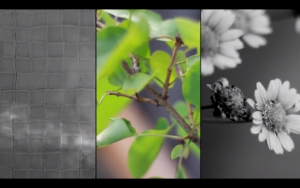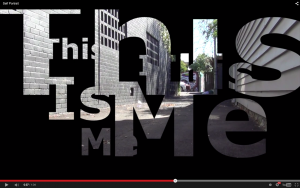In Thursday’s Tutorial, we had a mini screening of everyone’s portraits. Once again I was taken aback by how different everyone’s work was even though we were all given the same brief. I think that says a lot about the range of creative people and ideas in our class.
The following are the notes I made on the portraits created by my group-members.
Ali:
- Yellow: loved the opening and closing titles with the casual conversation and subtitles (looping back tied it all together too),
- Red: subtitles a signature for Ali’s work
- Black: I didn’t always understand the connection to found footage (bright-coloured cartoon towards the end)
- Yellow: Comedic, interesting connections between animals and subject (creative take on the concept of a portrait), subject’s actions and the filters on the shots matched up well with found footage clips
- Red: felt a little sci-fi mixed with the wild
- Green: could lower the opacity to see the shot of the animal and your friend at the same time
- Black: the planes seemed out of place amongst everything else (have subject mention this in the interview/voiceover to make it clear)
Jack:
- Yellow: there was a great integration of original and found footage, pacing was good
- Red: the black and white film created a very personal atmosphere, felt closeness to the subject
- Black: music volume was a bit too high, so sometimes it was hard to hear the speaking
I’m also really thankful to my group for the feedback I received, both good and bad, because it gave me a clearer look at how my work was received, which I could then compare to my goals for the project.
- Yellow: found images focused on what the subject was talking about, sled footage was dark (symbolically representative of the traumatic experience), colour balance was good (not too harsh or cold), sound levels edited well, subject looked natural in the shots (not like she was trying hard to avoid looking at the camera), cuts between handheld and tripod cameras worked well
- Green: show more about subject’s interests and hobbies (mixed opinions: another group member said they liked how everything was cut down and stripped away to something bare – ons story)
On a final note, I also particularly enjoyed Daniel’s portrait of his younger brother. The vibe of the video was very aspirational and the closeness between Daniel and his subject was evident in his brother’s demeanour, which is so important. The content was interesting listening to his brother talking about his dreams of becoming a music producer, and the video was edited together well.






